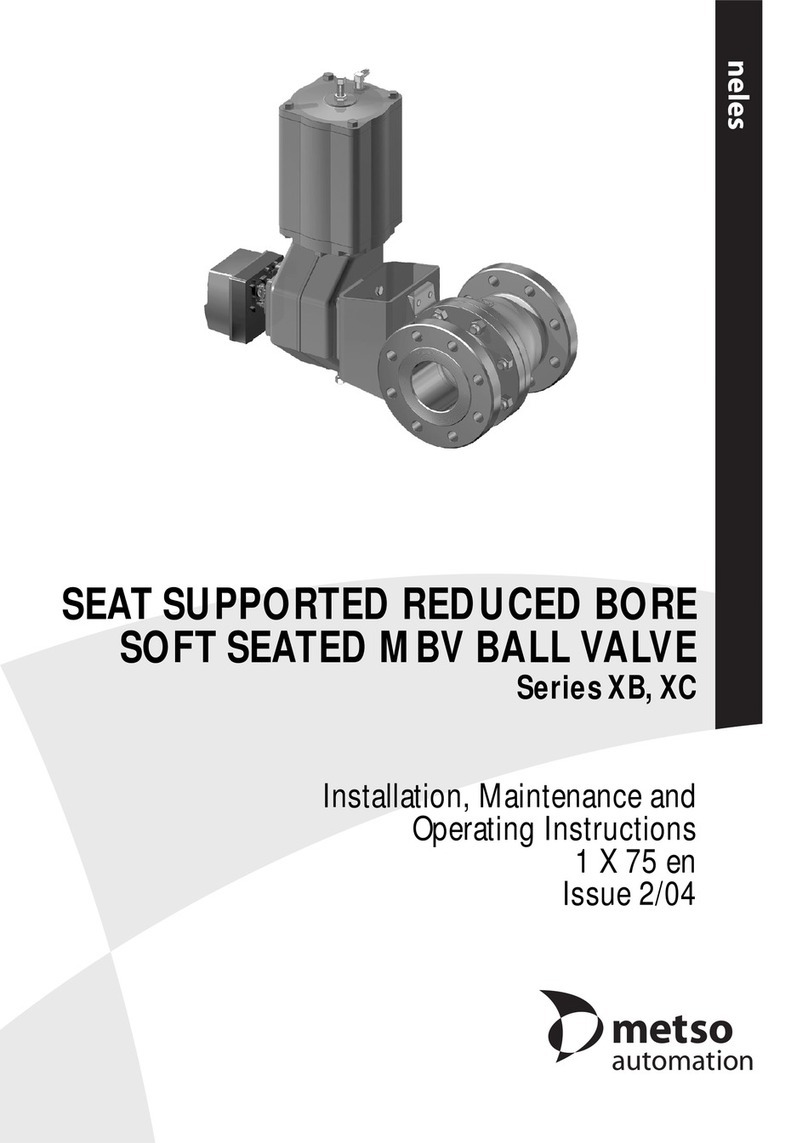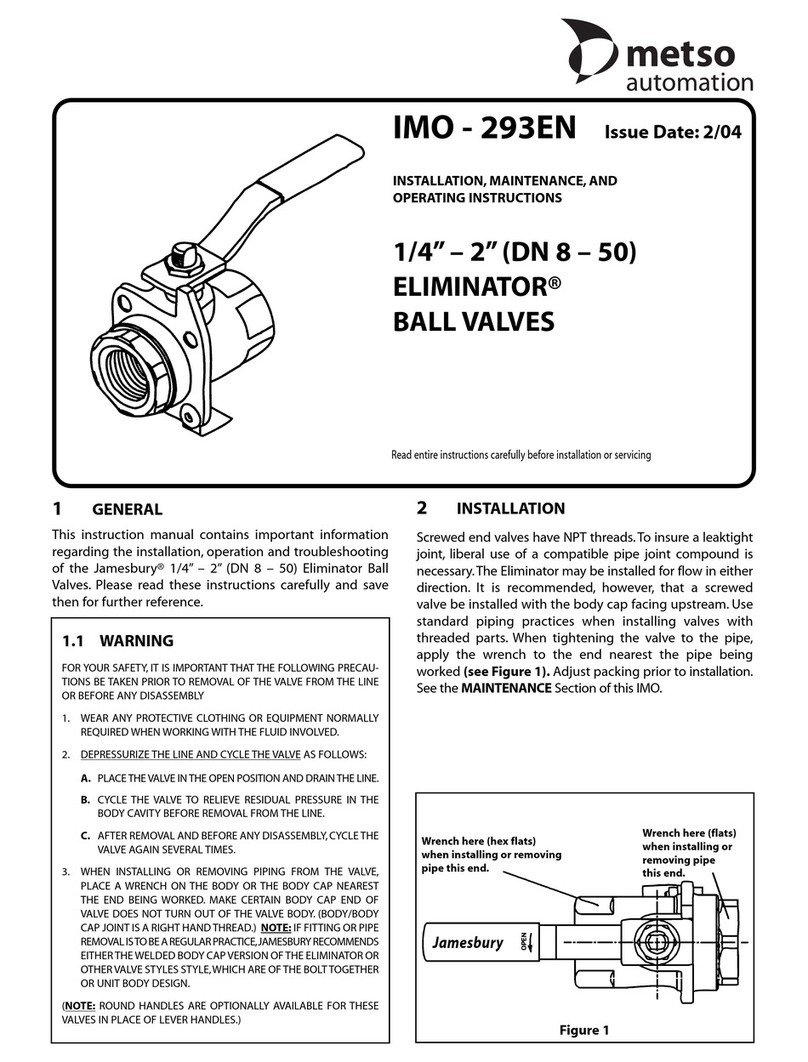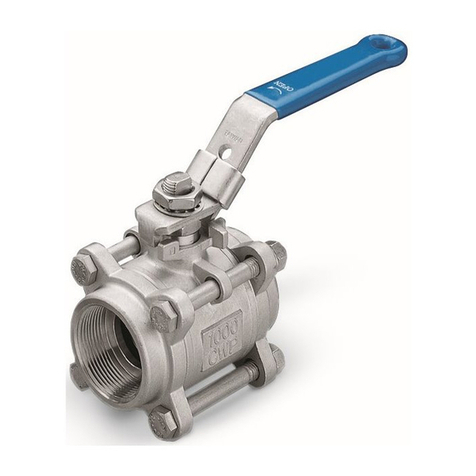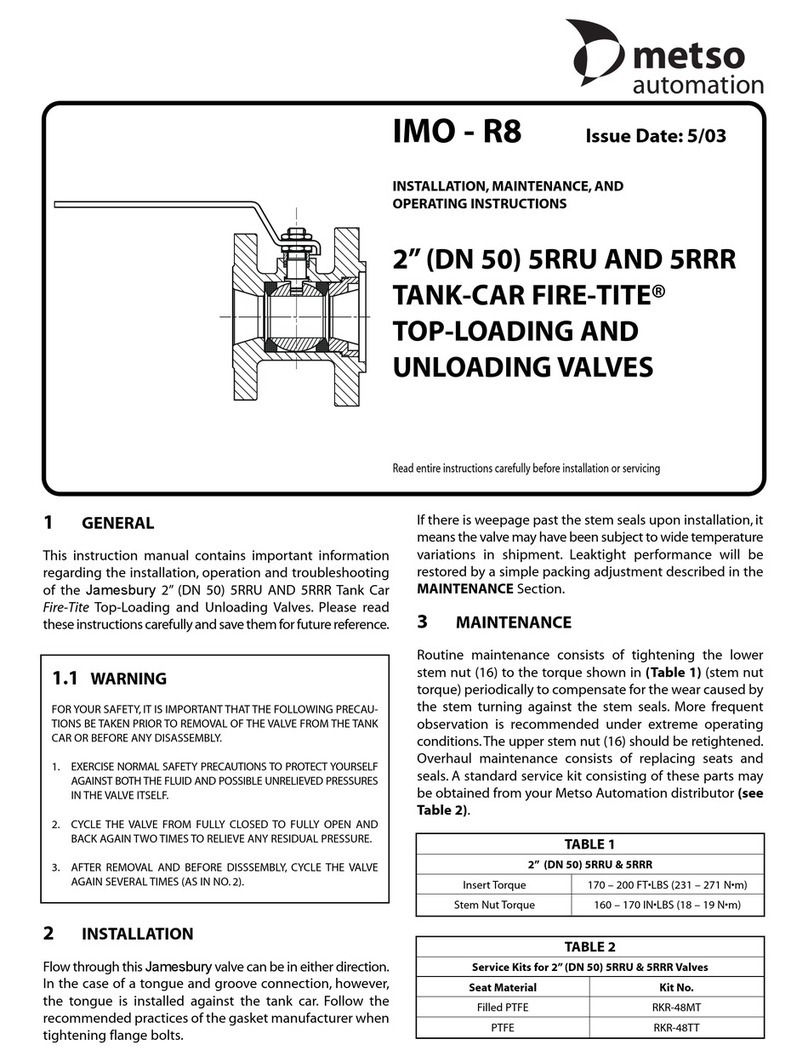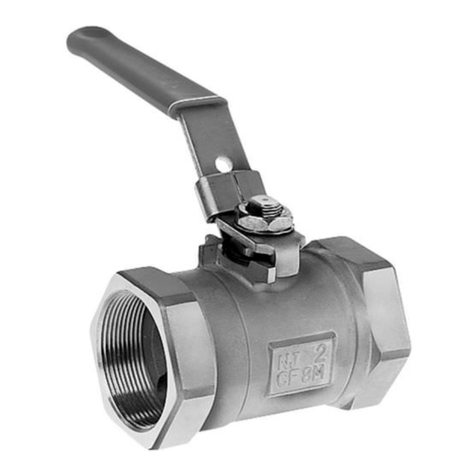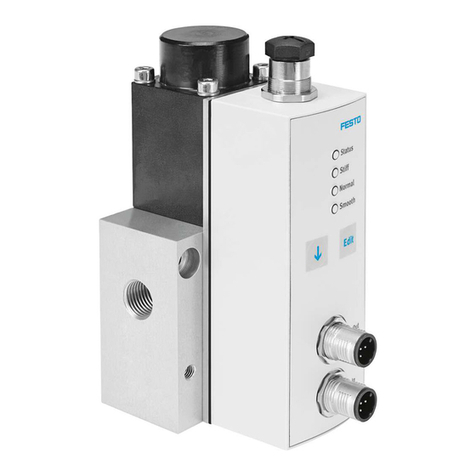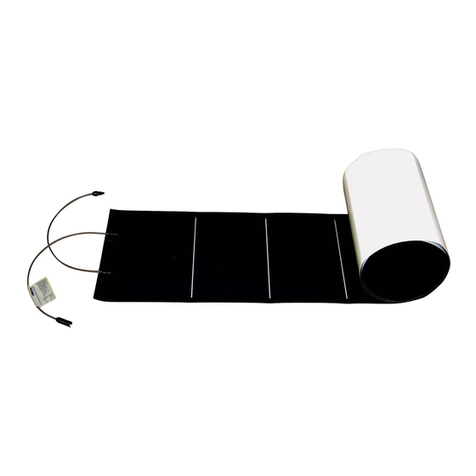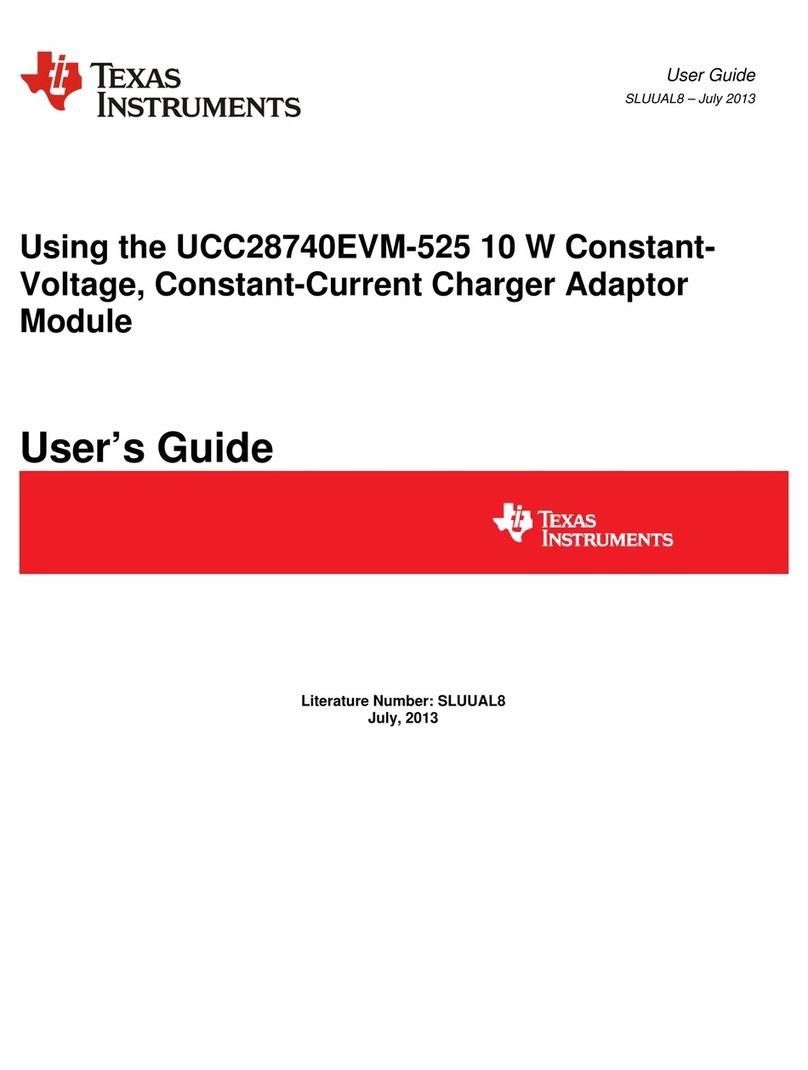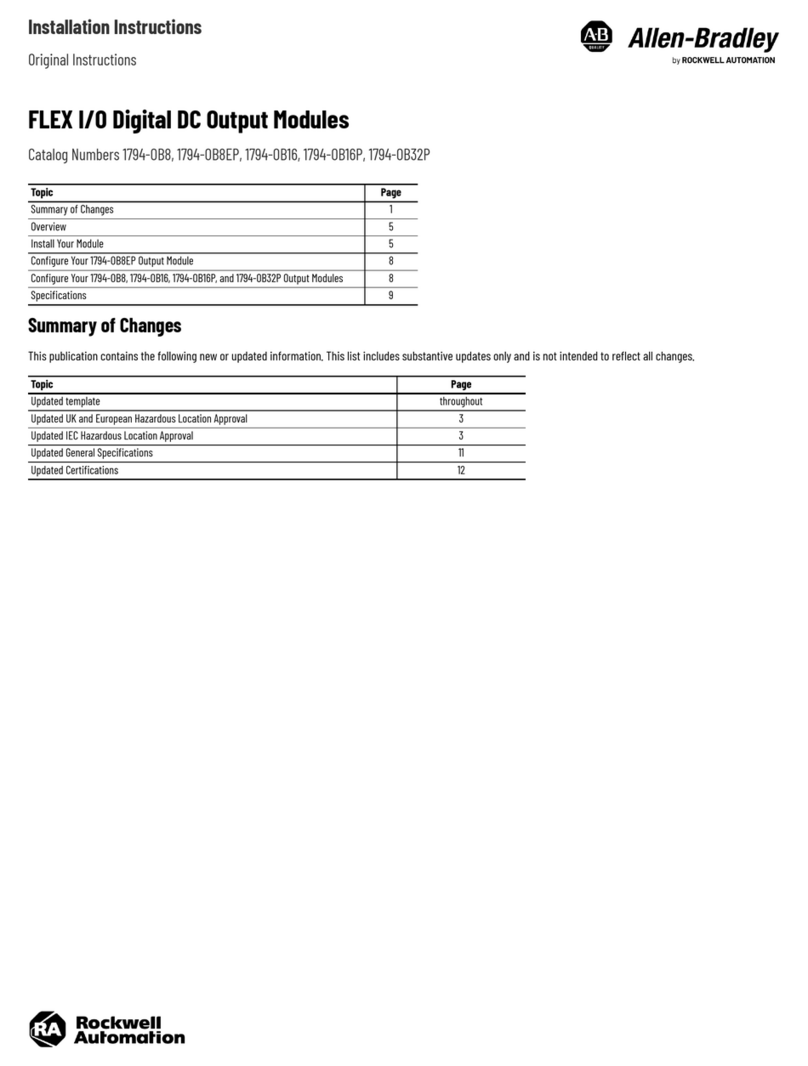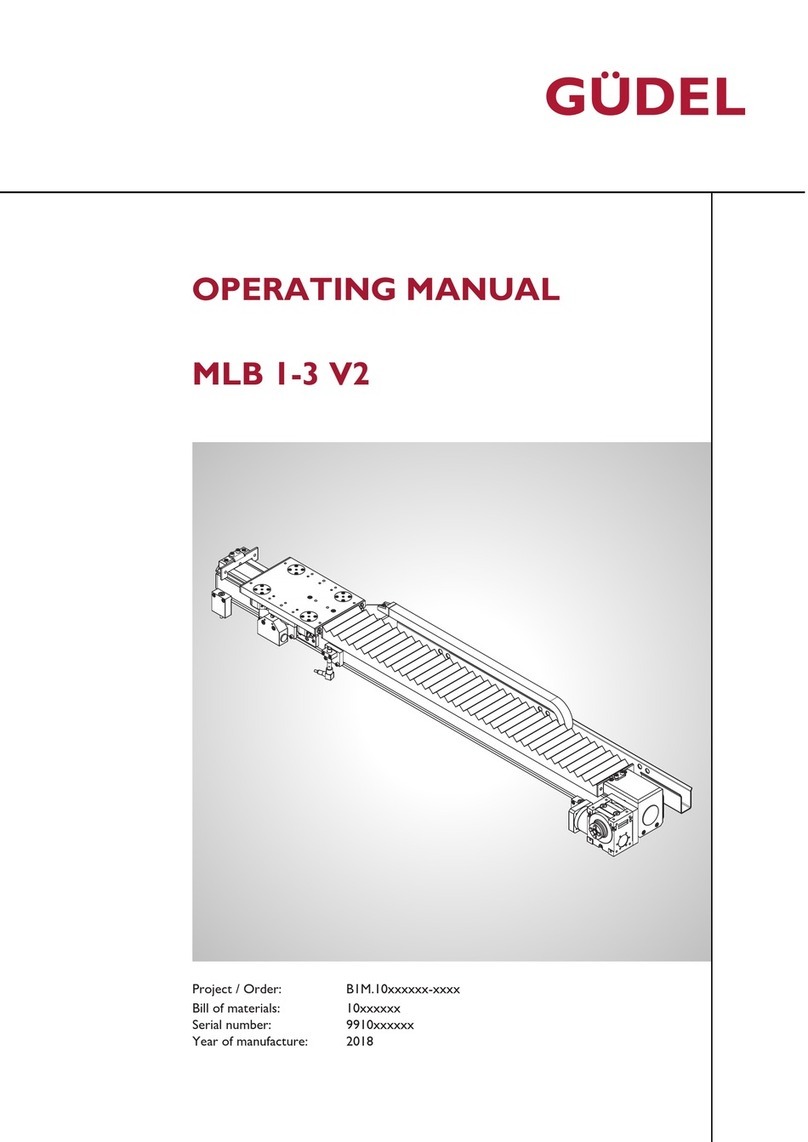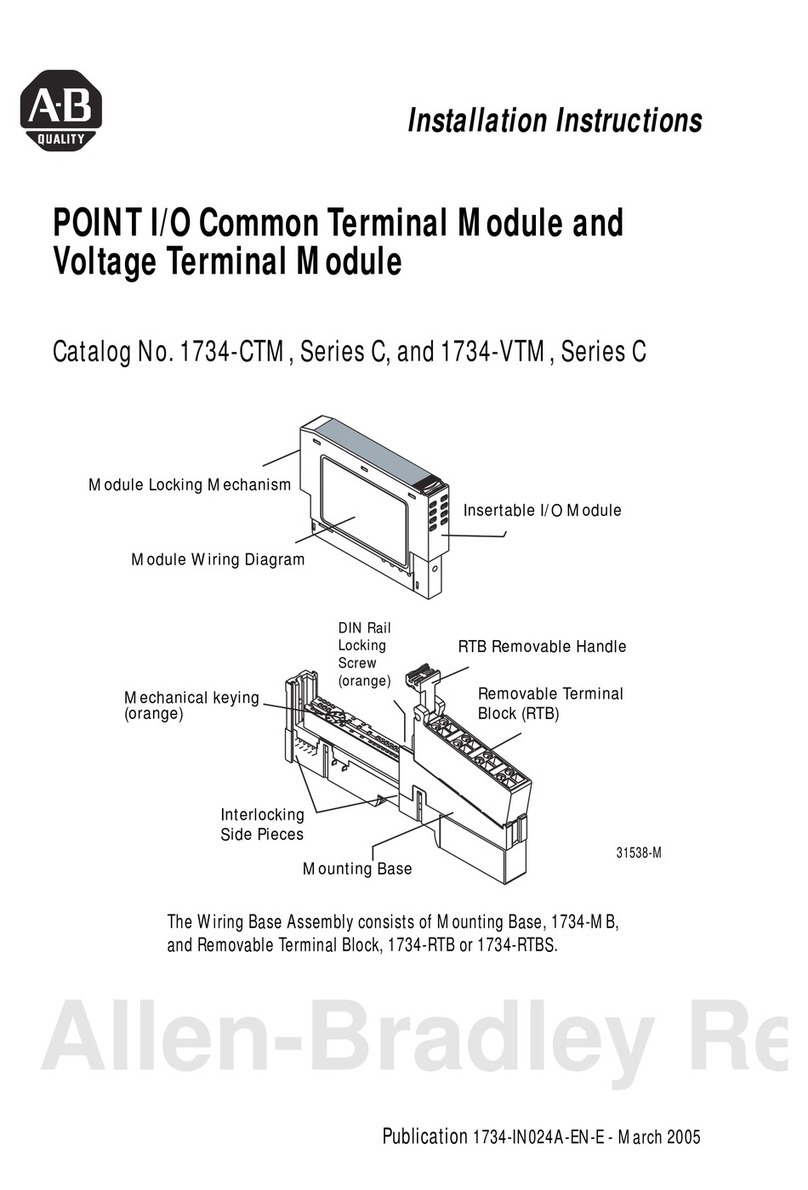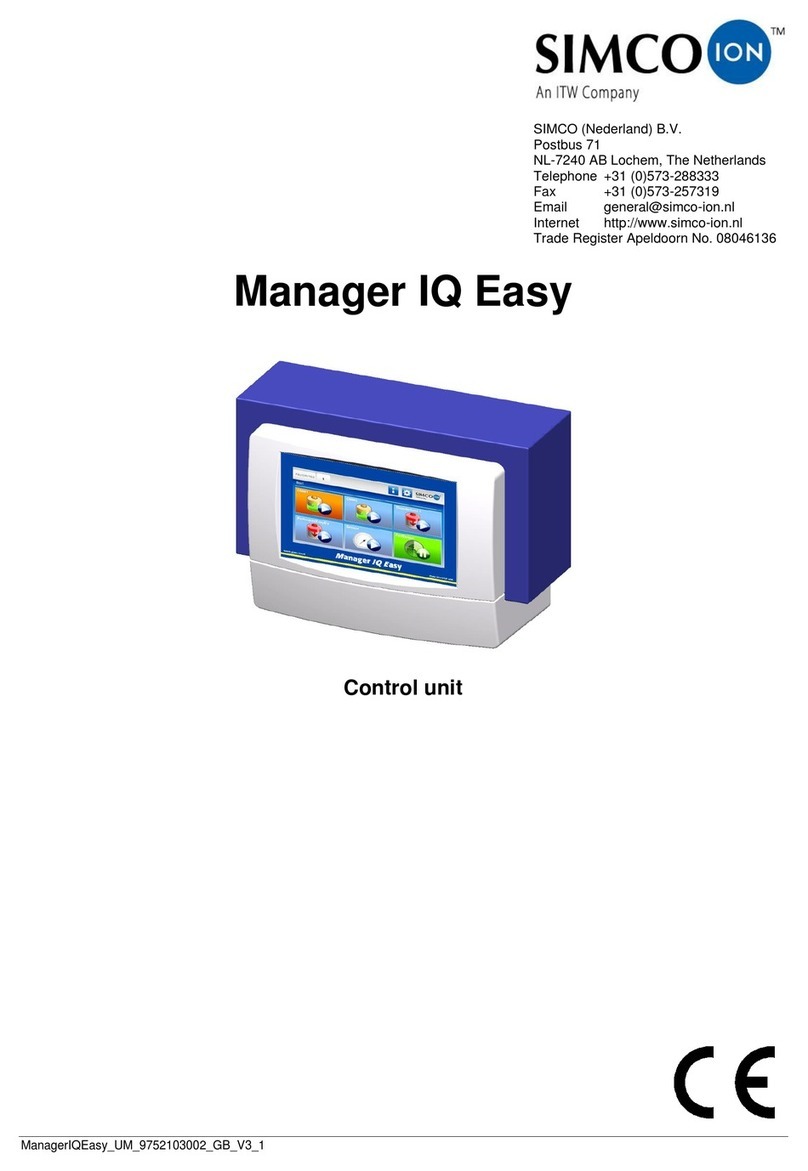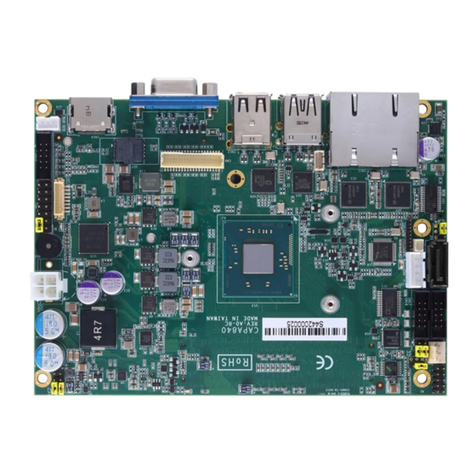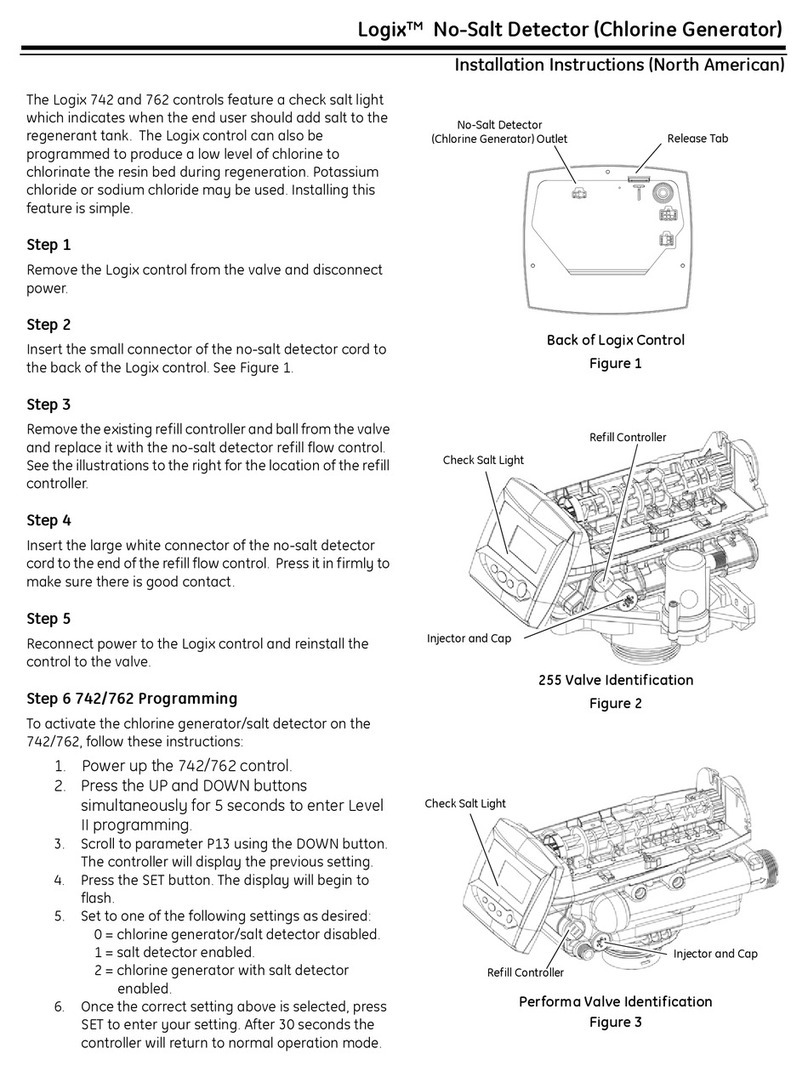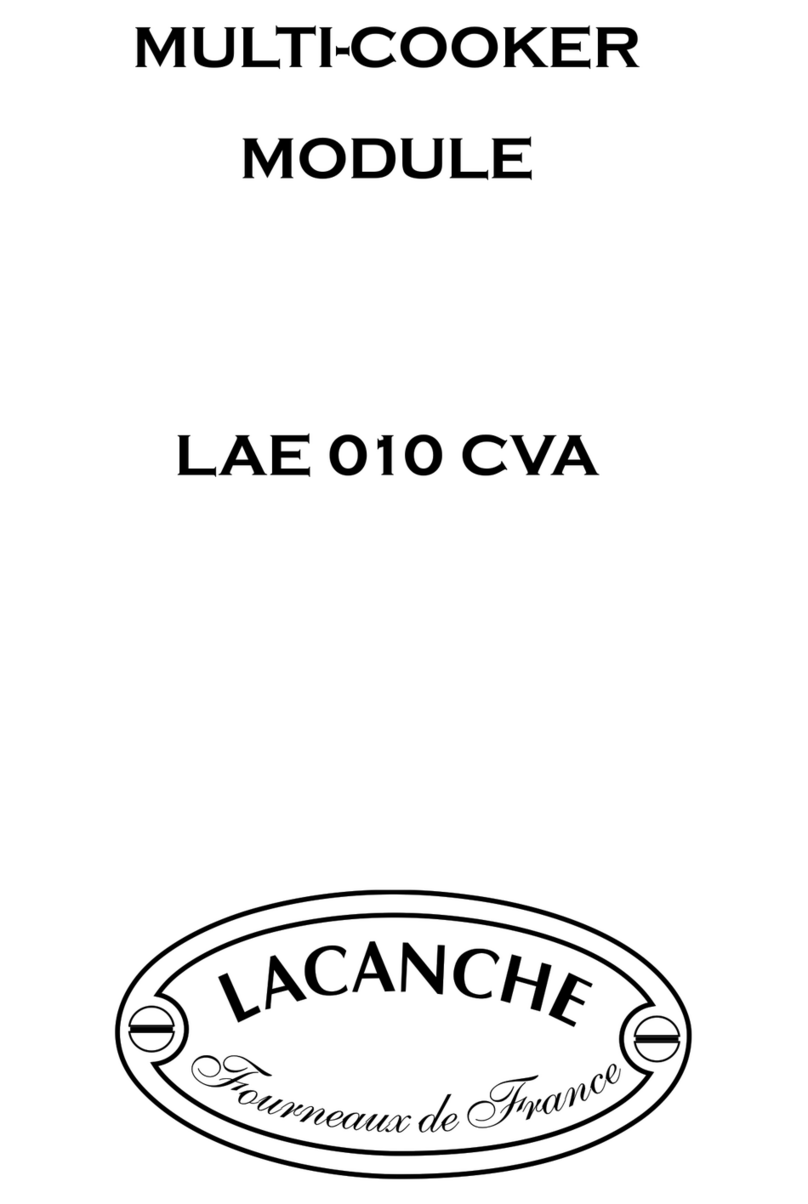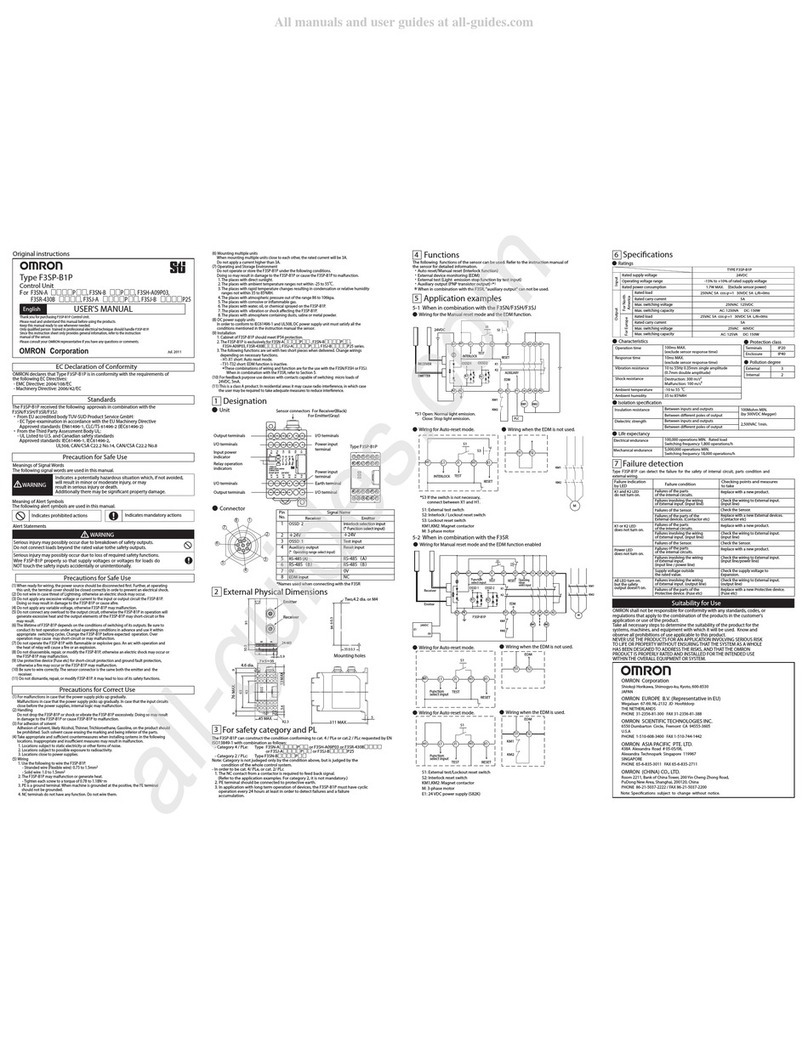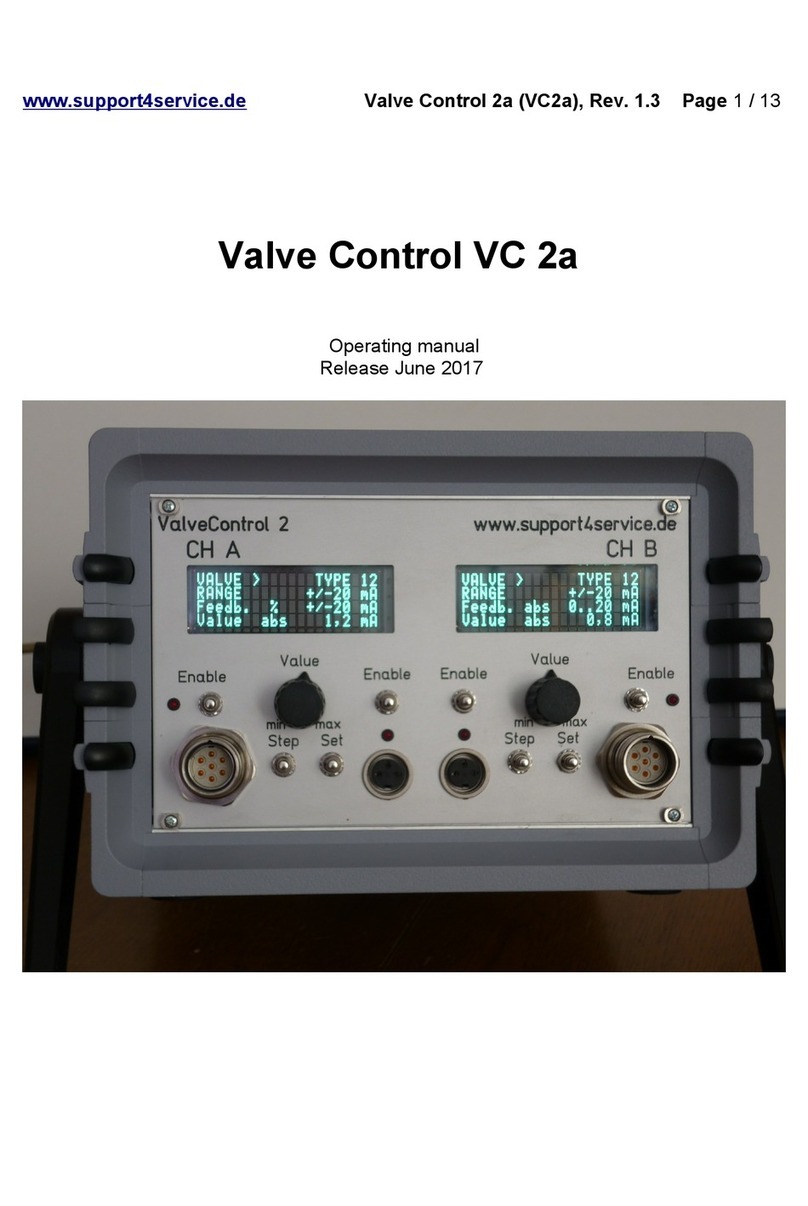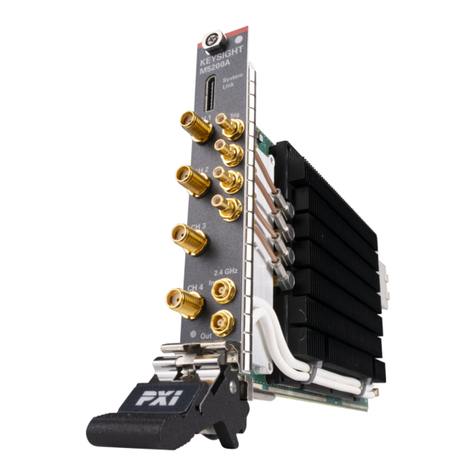
9
3. Remove the shaft seal compression hardware as detailed
in Steps 1-4 in the SHAFT SEAL REPLACEMENT
Section. The seal material itself can be more easily
removed after the shaft has been removed from the
valve.
4. Remove the disc pin welds by grinding or machining
off the welds. Drive out the pins opposite the installation
direction shown in (Figure 5).
5. Remove screws (55) and cover plate (53), and remove
gasket (54).
6. Remove the shaft (4). NOTE: When removing the shaft
and freeing the disc,be careful not to scratch the sealing
surface of the disc.
7. Remove the disc (3) and upper and lower thrust
bearings (64).
8. Remove the top bearing (6) either through the top of
the valve or the waterway.
9. Remove the bottom bearing (6).
3.7 Valve Assembly
Numbers in ( ) refer to items shown in (Figure 5).
1. Clean all valve components.
2. Inspect all components for damage before assembling
the valve. Look for damage to the sealing areas on the
disc, shaft, and body, and for wear in the bearing areas.
3. Carefully clean and polish the disc sealing surface. It
should be free from all grooves and scratches.
4. If the disc is slightly damaged, it may be possible to
smooth the sealing surface with crocus cloth, a fine
stone,or the equivalent. If deep scratches are present,
replace the disc or return the valve to the factory for
service.
5. Install the bearings (6) into the body bores.
6. To ease assembly of the shaft into the disc, it may be
necessary to coat the shaft and the disc bore lightly
with a lubricant compatible with the media to be
handled by the valve.
7. Slide the shaft through the top bearing and engage
the top thrust bearing (64). With the two pin holes
toward the bonnet, place the disc in the waterway and
slide the shaft through the shaft bore in the disc.Place
the lower thrust bearing (64) below the disc, slide the
shaft through and into the lower shaft bearing (6). Use
caution to prevent damage to the shaft bearings and
disc sealing surface.
8. Insert the disc pins (13), as shown in (Figure 5), and
drive them into place. The pins must be driven so that
both pins are the same depth within 1/16” (1.56 mm).
When they are correctly installed the drive shaft will be
as shown in (Figures 1 and 2).Weld both ends of the
pins, small end first, grounding the shaft only (body on
blocks of wood).After the disc cools,clean the welds with
a wire brush.CAUTION: Use care to keep contamination
out of the valve.
9. Install the upper bearing spacer (41) when applicable,the
spacer (7) with chamfered side toward disc, the shaft
seal (8), the compression ring (9) and the retainer ring
(47). If the shaft seal is of the PTFE V-ring type, be certain
that it is installed in the orientation shown in (Figure 5).
10. If the studs (14) have been removed from the valve,
reinstall them in the holes shown in (Figure 5), using
Loctite® or other locking compound to prevent vibration
loosening. Stud protrusion should be 2” (50.8 mm) for
the 3”,4”,6” and 8” (DN 80, 100, 150 and 200) valves and
2-1/4”(57.15 mm) for the 10”and 12”(DN 250 and 300)
valves.
11. Install new gasket (54), and secure cover plate to valve
body using screws (55). To ensure even gasket loading
tighten screws, in an alternating sequence to torque in
(Table 2).
12. If the handle ratchet plate has been removed from the
valve, reinstall it in the orientation shown in (Figure 6).
Install lock washers and screws in the two bonnet
holes. Do not tighten the screws until the stops are set.
(See SETTING HANDLE STOP Section or ACTUATOR
MOUNTING INSTRUCTIONS Section.)
13. Place the compression plate (10) over the shaft (4) and
studs (14). Install the nuts (15), but do not tighten.
14. Cycle the valve fully closed. Install new unused seat and
body seal. See the SEAT REPLACEMENT Section for
details.
15. With the valve still closed, tighten the nuts (15) on the
compression plate evenly until the shaft seals are
adequately compressed to prevent leakage. This
should require tightening the nuts approximately 1-1/2
to 2 full turns after they have both come into contact
with the compression plate.
16. Set the handle or actuator stops as described in the
SETTING HANDLE STOP Section or ACTUATOR
MOUNTING INSTRUCTIONS Section. Tighten the
screws holding the ratchet plate.
















